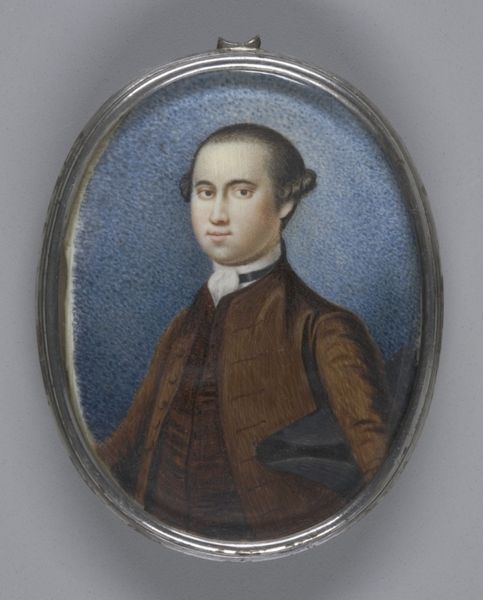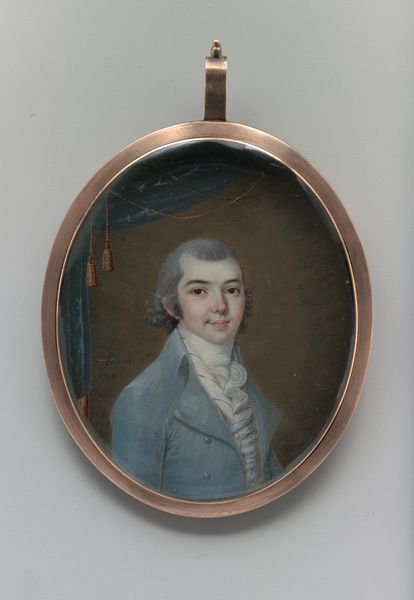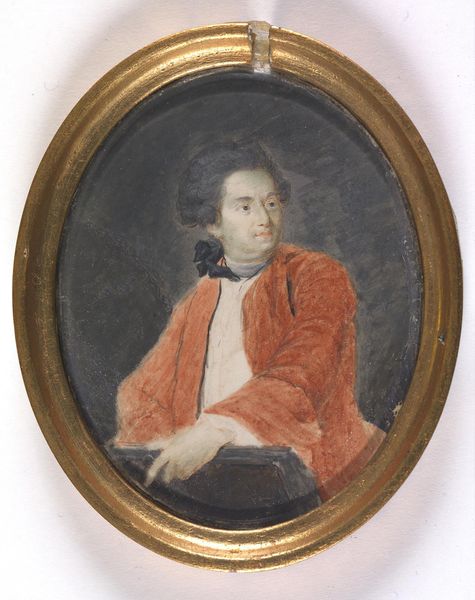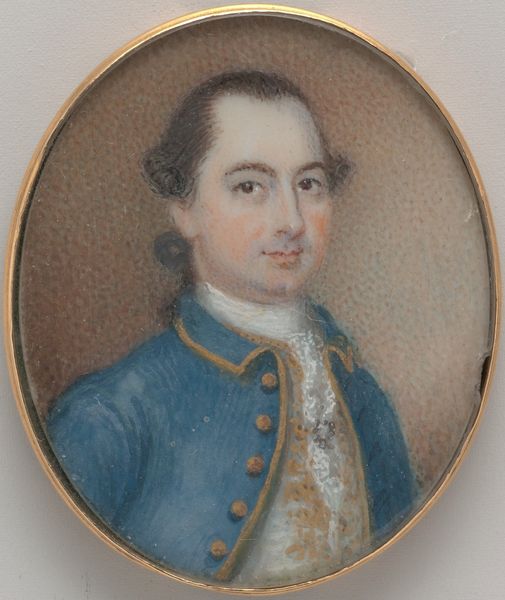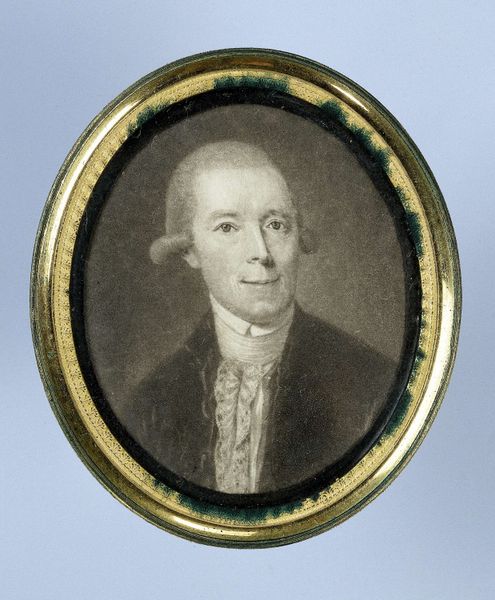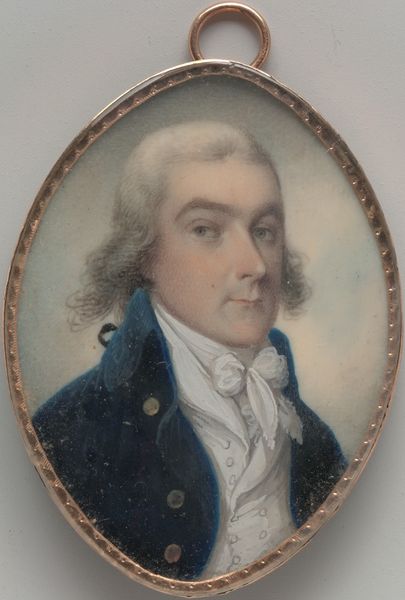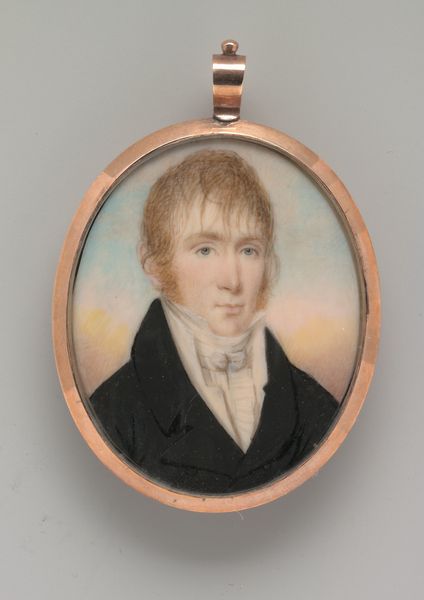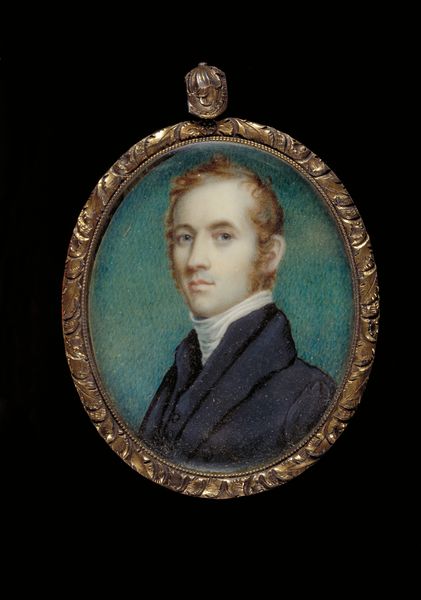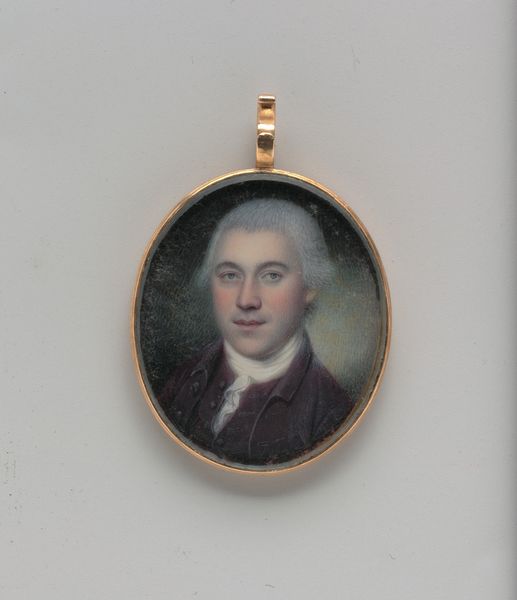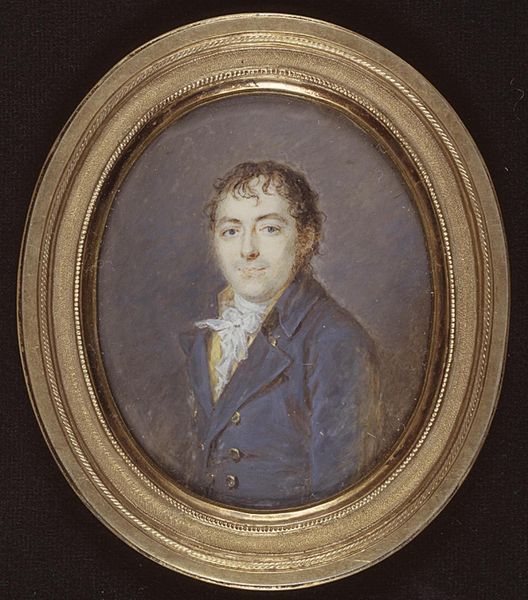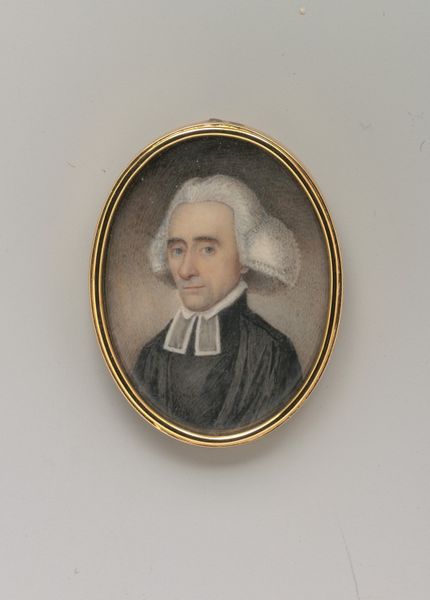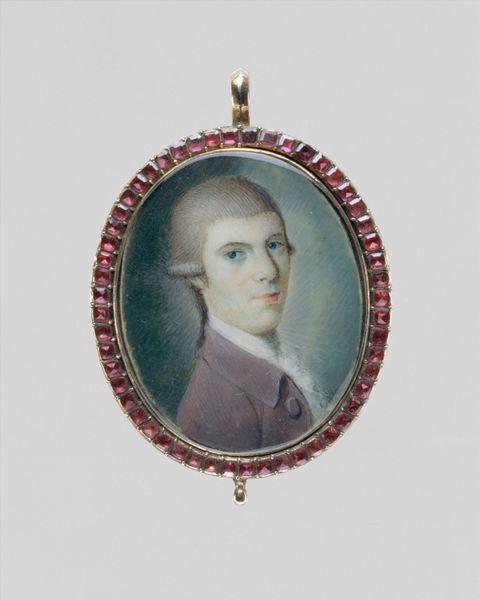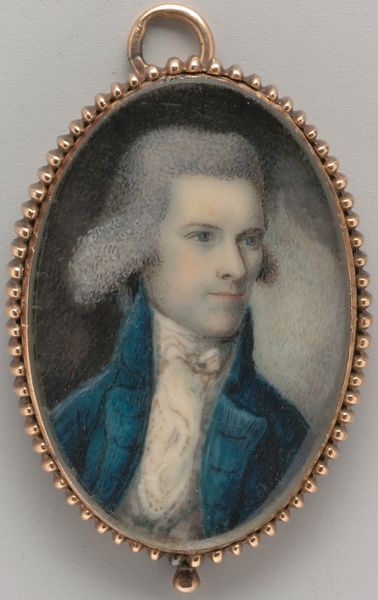
Dimensions: 1 1/2 x 1 in. (3.7 x 2.5 cm)
Copyright: Public Domain
Editor: This miniature, "Portrait of a Gentleman," dating from around 1782-1785, gives a very intimate feel, doesn’t it? I mean, considering it's likely watercolor or even colored pencil, how remarkable is it? It’s so small and contained. How do you interpret its purpose within the wider artistic context of the time? Curator: It’s definitely intriguing as a personal object. Given the timeframe, let’s consider its creation alongside the rise of revolutionary sentiments and the shifting power dynamics in both America and Europe. How do you think portraits, especially miniature ones, served within these sociopolitical landscapes? Editor: Maybe as status symbols, ways of asserting identity in changing times? Curator: Precisely. This particular gentleman's likeness becomes a deliberate statement, circulated amongst a specific social sphere, perhaps subtly aligning himself with certain ideological currents through his pose, dress, even the very act of commissioning such a piece. Miniatures allowed for discreet displays of loyalty or aspiration, operating outside the grand pronouncements of state portraiture. Consider, too, the tradition of gifting miniatures—they fostered networks of allegiance. Editor: So it’s less about pure artistry and more about social messaging, a coded communication. Do you see any evidence in the painting that supports that idea? Curator: Well, look at the sitter’s reserved gaze, and somewhat concealed position. Are they indicative of someone asserting themselves or operating within constraints? I would lean towards the latter and thus read a message here beyond the basic rendering of a likeness. These portraits were part of constructing and negotiating identities. Editor: That completely reshapes how I see it. It is far from a mere image. It reflects on societal structures that used art as an intricate form of communication. Thanks! Curator: Absolutely, understanding its social context gives it a new layer of importance.
Comments
No comments
Be the first to comment and join the conversation on the ultimate creative platform.
